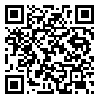Volume 40, Issue 3 (2025)
GeoRes 2025, 40(3): 1001-1009 |
Back to browse issues page
Article Type:
Subject:
History
Received: 2025/10/13 | Accepted: 2025/11/2 | Published: 2025/09/1
Received: 2025/10/13 | Accepted: 2025/11/2 | Published: 2025/09/1
How to cite this article
Pooshasb A. Comparative Analysis of the Effects of Physical and Social Attributes of Urban Spaces on Users’ Behavioral Patterns: Case Study of Mellat Park, Laleh Park, and Bam Land, Tehran. GeoRes 2025; 40 (3) :1001-1009
URL: http://georesearch.ir/article-1-1838-en.html
URL: http://georesearch.ir/article-1-1838-en.html
Download citation:
BibTeX | RIS | EndNote | Medlars | ProCite | Reference Manager | RefWorks
Send citation to:



Rights and permissions
BibTeX | RIS | EndNote | Medlars | ProCite | Reference Manager | RefWorks
Send citation to:
Abstract (359 Views)
Aims & Backgrounds: Urban public spaces play a vital role in social interactions and citizens' quality of life. This research aimed to conduct a comparative analysis of the impact of physical and social characteristics on users' behavioral patterns in three significant public spaces in Tehran (Melat Park, Laleh Park, and Bamland).
Methodology: This applied-descriptive study employed a survey method. The statistical population consisted of users of these three public spaces, from which 375 individuals were selected using Cochran's formula and stratified random sampling. Data were collected through a researcher-made questionnaire, the validity and reliability of which were confirmed, and analyzed using ANOVA, Pearson correlation tests in SPSS software.
Findings: The results revealed significant differences among the three spaces regarding users' social characteristics and optional activities, while physical characteristics showed no statistically significant differences. Correlation analysis revealed complex relationships between variables, indicating that physical characteristics played a more prominent role in shaping user behavior in Melat Park, while social characteristics were more influential in Bamland.
Conclusion: The findings indicate that although physical characteristics provide the essential infrastructure for public spaces, users' social characteristics and optional activities have a more determining influence on shaping behavioral patterns. These results emphasize the necessity of simultaneous attention to social and physical dimensions in the design and management of urban public spaces.
Methodology: This applied-descriptive study employed a survey method. The statistical population consisted of users of these three public spaces, from which 375 individuals were selected using Cochran's formula and stratified random sampling. Data were collected through a researcher-made questionnaire, the validity and reliability of which were confirmed, and analyzed using ANOVA, Pearson correlation tests in SPSS software.
Findings: The results revealed significant differences among the three spaces regarding users' social characteristics and optional activities, while physical characteristics showed no statistically significant differences. Correlation analysis revealed complex relationships between variables, indicating that physical characteristics played a more prominent role in shaping user behavior in Melat Park, while social characteristics were more influential in Bamland.
Conclusion: The findings indicate that although physical characteristics provide the essential infrastructure for public spaces, users' social characteristics and optional activities have a more determining influence on shaping behavioral patterns. These results emphasize the necessity of simultaneous attention to social and physical dimensions in the design and management of urban public spaces.








